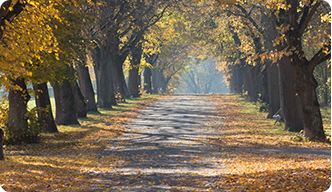

WHAT HAPPENS FOLLOWING A DEATH
Everyone of us will have to deal with the death of a loved one at some point in our lives. When it happens you need some helpful advice on what to do.
WHAT TO DO FIRST
After someone dies, a doctor will need to be notified to sign a Cause of Death Certificate. Depending on where the person dies and under what circumstances, there may be different steps to completing these forms. If the death is expected, this is usually a straightforward process. If the person dies at home, contact their regular doctor. If they have died in a nursing home or hospital, the staff will usually arrange this.
The next step after contacting the doctor is to speak to a funeral director. The funeral director will collect the information needed to process the paperwork for a death certificate and help manage the transport of the deceased.
The Cause of Death Certificate issued by a doctor is different to the Death Certificate, which your funeral director will arrange for you after the funeral. The Death Certificate is the official registration of the death, produced by the state based Registry of Births, Deaths and Marriages.

ARRANGING A FUNERAL
When it comes time to arrange a funeral, one of the first questions you will need to consider is whether the deceased will be buried or cremated. There are a number of reasons why people may choose one over the other including religion, cultural influences and of course personal preference. Regardless of your choice, a funeral director will be able to help you make arrangements for either.
Today in New Zealand, there is no single definition of a funeral and no real rules telling you what can or can’t be done. For many people there are cultural and religious traditions that take place at a funeral however there is an increasing trend toward a more informal and individualised ceremony. A big advantage of this shift is that it is now easier to tailor funerals to fit a budget. Saying that, many funerals still have the following elements:
- A venue to hold the ceremony at - this could be at a funeral home, in a church or at another location all together.
- Music – generally a selection of songs that represent something about the person.
- Flowers to decorate the venue and casket.
- Vehicles to transport the coffin or casket to and from the venues.
- A person to conduct the ceremony – this could be a friend, family member or a member of the deceased’s faith like a priest.
- A coffin or casket, these range from very traditional to more elaborate styles.
- Order of service booklets are frequently used to help guide attendees through the funeral service.
These are just some of the most common things you will find at a funeral. There are very few actual limits on what is possible, so make sure you talk through the options with your funeral director.
ON THE DAY

When the day of the funeral comes, having the ceremony planned with a trusted funeral director can take a lot of stress out of the event. Their role is to work with you to plan the day and then manage the service suppliers (like florists and coffin makers) so you don’t need to worry about it. They will ensure that the deceased is properly cared for in the lead up to the ceremony so that you can focus your attention on the ceremony.
MEMORIALISATION
It is important to decide what will become of the remains after the funeral service. There are a number of options to consider regardless of whether the body was cremated or will be buried. Your funeral director will be able to help you with speaking to a crematorium or memorial park to make the necessary arrangements if needed. Here are just some of the more common options available for memorialisation.
CREMATIONS
- Ashes can be placed in an urn and kept.
- The ashes can be scattered in one or multiple places that are significant to the deceased or those still living.
- The ashes can be buried and memorialised with a head stone, marker or memorial.
- Ashes can also be interred in a wall with a commemorative plaque.
- You can even bury the ashes and plant a tree over the top of them.
BURIAL
- Underground burial in a cemetery or memorial park.
- Interment in a mausoleum or crypt
- With special permission you may even be able to bury the body on private property.
As you can see, there are a lot of options these days when it comes to planning a funeral. This doesn’t mean the funeral arrangements need to be difficult though, as a funeral director can help you every step of the way. The huge range of options means that you can have everything from a very traditional cultural funeral all the way through to a highly individualised, modern, informal ceremony and everything in between.

There is an array of certificates produced by the state based Registry of Births, Deaths and Marriages to record all deaths that occur in New Zealand.

The cost of a funeral can vary greatly and depends on what sort of ceremony is planned.

After organising the details of the funeral, you will have a few different options in how to pay for it.

